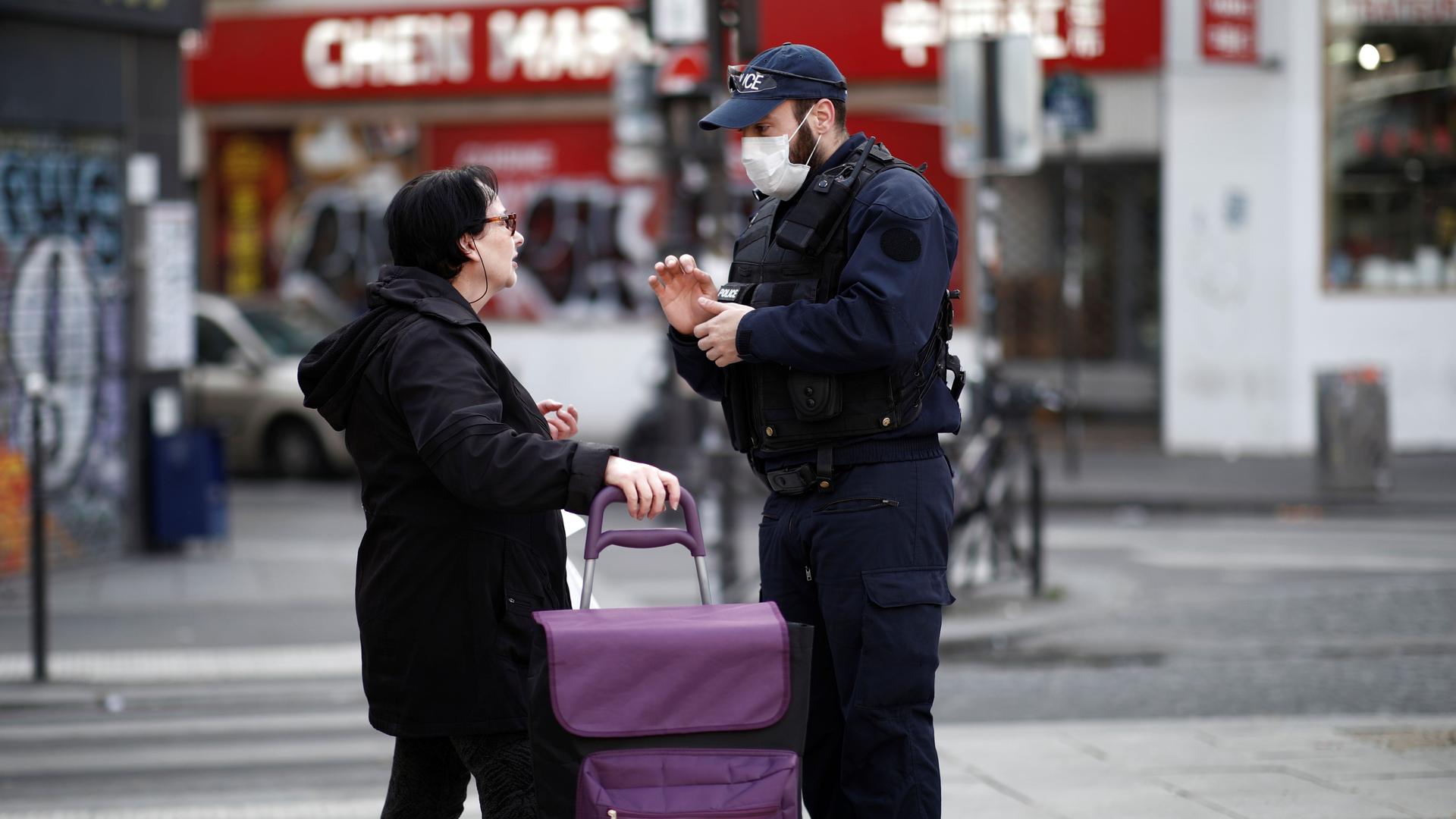By most estimates, it will be more than a year before we have a vaccine for the new coronavirus, which causes the disease known as COVID-19.
That sounds like a long time. But according to vaccine developers, that’s already lightning speed.
“We already see that it’s being developed very quickly,” said Christiane Gerke, the head of vaccine research as the Pasteur Institute in Paris, one of France’s leading scientific research centers.
Related: Coronavirus fears in Asia create a black market for masks
Earlier this year, the institute appointed Gerke to join its coronavirus task force, a team of researchers who have dropped everything to study the virus that causes COVID-19.
On Jan. 10, researchers in China released the genetic sequence of the virus, the first crucial step in coming up with a vaccine. Since then, Gerke’s team has been moving quickly. They’re using what’s called a “measles vector” approach, one of the more traditional ways of developing a vaccine. Gerke said that this method has a proven track record for safety and reliability.
“We already have experience with the technology in humans. It was safe, well tolerated and immunogenic after just one immunization.”
“We already have experience with the technology in humans,” she said. “It was safe, well-tolerated and immunogenic after just one immunization.”
Gerke’s group is one of more than 100 labs across the globe that is racing to develop a vaccine. Many of them are collaborating across national borders and the public and private sectors to speed the process.
A number of them have received funding from the Coalition for Epidemic Preparedness Innovations (CEPI), a foundation launched in 2017 in the wake of the Ebola crisis. Based in Norway, CEPI matches groups from the public and private sectors in countries around the world with the goal of accelerating vaccine development.
Clinical trials launch for mRNA vaccine
“The idea of working across borders and across governments is very important.”
“The idea of working across borders and across governments is very important,” said Barney Graham, the deputy director of vaccine research at the National Institute of Allergy and Infectious Diseases, or NIAID, a part of the US National Institutes of Health.
Related: In Jerusalem’s Old City, the faithful cope with the coronavirus
NIAID has been getting attention for its CEPI-funded partnership with a biotech startup called Moderna Inc. Together, they’re working on a vaccine that’s already started phase one trials in humans. On Monday, a group of 45 healthy adults in Seattle received the first of two injections for a vaccine that uses something called messenger RNA (mRNA) technology. In simplest terms, mRNA injections deliver instructions to cells in the body to make certain proteins that can fight disease.
The big advantage here is that mRNA technology can be developed quickly — no need to wait for any cells to grow in a lab, a process that typically takes months. That doesn’t mean the vaccine will be available for immediate, widespread use. After phase one, there will be several more phases of clinical testing spread out over time; first in animals, then in humans. Though there have been some talks about speeding up these trials.
“The question is what do we have to do to make the more advanced development go rapidly so that we can actually have a vaccine for use within a reasonable amount of time,” Graham said.
For him, reasonable would mean in less than two years.
Innovation without a timeline
Other researchers are working without a timeline altogether. That’s certainly the case at the Vignuzzi Lab run by virologist Marco Vignuzzi.
Here, researchers track the way viruses evolve over time with the hope of advancing vaccine development. But they don’t expect any immediate breakthroughs.
“We imagine the vast majority of approaches that we try to develop to make vaccines will not work.”
“We imagine the vast majority of approaches that we try to develop to make vaccines will not work,” Vignuzzi said.
Related: COVID-19 impact could be as ‘serious as a world war,’ former amb says
Vignuzzi’s lab has started preliminary research on a vaccine that would target a number of coronaviruses, not just the one that causes COVID-19.
This would be groundbreaking, especially as researchers speculate that current vaccine breakthroughs could become obsolete as the virus evolves.
“We can imagine that in 10 years, an entirely different coronavirus will come out for which the current vaccine would not work,” Vignuzzi said.
He says, for now, the Moderna-NIAID vaccine holds the most promise. And he agrees that working together is helping to speed the long process of vaccine development.
“In virology, we’re such a small community overall that we all know each other around the world, and we collaborate together,” he said. “This time with COVID-19, I think it’s been really nice to see what there is a much bigger true collaboration where whether it’s in public health or in the research community, the results are made as soon as possible.”
Related: Living under lockdown in the Eternal City
That’s something to take comfort in, Vignuzzi said. The path toward a vaccine against the new coronavirus isn’t an arms race — but a true global partnership.
The story you just read is accessible and free to all because thousands of listeners and readers contribute to our nonprofit newsroom. We go deep to bring you the human-centered international reporting that you know you can trust. To do this work and to do it well, we rely on the support of our listeners. If you appreciated our coverage this year, if there was a story that made you pause or a song that moved you, would you consider making a gift to sustain our work through 2024 and beyond?
